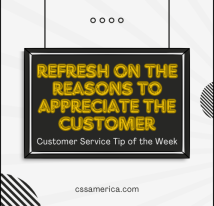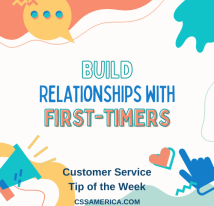We often note that empathy is the most important quality to have in order to be great at customer service. Empathy enables you to view people uniquely. It helps the customer not to feel like just a number. And the more we can view people as individuals, the better chance we have of addressing their specific issue, need, or goal.
But what does it mean to view people uniquely?
To address this question, with one education industry client, we created the following exercise. Without going into too much detail in terms of how we conducted the activity, let’s just say that, as a group, workshop participants filled in these blanks to paint profiles of different students at the college.
I am a _________________ student at this community college.
I have been at this college for _______________ (time).
I’m going to college in order to _________________________.
I enjoy the ______________________ aspect of attending this college.
Outside of classwork, the most frustrating part of being a student is __________________.
I also get confused by processes like ________________ and terms like __________________.
Form the Story
Once the blanks were filled in, stories started to be told. For example, one student story formed: I’m a veteran. I have been at the community college for 6 months, and I’m going to college to start a different career. I enjoy having affordable education near my home. However, I am frustrated by miscommunications and difficulties with the advising process. I got confused about refund policies when I needed to drop a course, and terms like SOP don’t make any sense to me.
Respond based on their Uniqueness
To build your own capacity for empathy, or to illustrate empathy to others, create your own Empathy Exercise. Come up with similar statements for you and your co-workers to complete. Fill in each blank, and then discuss the individual. What makes them unique? How should we address them, respond to them differently based on who they are, what they enjoy, or what is frustrating or confusing?
The conversations you have in addressing these two questions are some of the most important discussions you can have when trying to build a better understanding of and appreciation for your customers.
To build your ability to view people uniquely, try an Empathy Exercise.
Signup for FREE Tips! Contact Us More Resources for You Visit Our Home Page
























